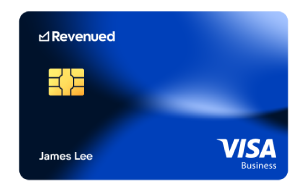How to Manage Invoices
How to Manage Invoices
A document listing the goods and services that you’ve provided to a customer, and creating and sending invoices is one of the most important tasks for running a successful small business.
Invoices serve as a critical tool for documenting exactly what you’ve sold to a customer, whether it’s physical goods or services, as well as the price that they pay in exchange for what you’ve provided.
At first glance, invoice management might seem simple, but when it comes to juggling multiple clients with different pricing tiers or order values, tracking who’s paid and who hasn’t paid, and issuing multiple invoices to the same client for different amounts, dealing with your invoices can quickly become tricky.
Unfortunately, most small business owners will need to contend with late payments and customers who avoid paying their invoices at some point during their careers. According to research, a staggering 39% of invoices issued in the US aren’t paid on time.
Almost half (44%) of small business owners say that late payments hurt their business. Beyond being inconvenient, late or unpaid resources create a serious strain on an organization’s finances. When invoices aren’t paid on time (or at all!) small businesses are left in a tenuous position.
Unpaid invoices result in a lower cash flow, which can potentially sink your business. If you’re struggling to collect on invoices from a large enough proportion of your customers, you could easily end up in debt or unable to continue your basic day-to-day operations.
Providing valuable hours of service or inventory and not being paid appropriately means that your business is losing money. Even if the payment eventually arrives, not receiving the expected funds in a timely manner could mean that you don’t have enough to cover your obligations to everything from vendor and supplier bills to paying your employees’ wages.
Legal action for non payment of invoices is possible, should your customer refuse to pay even after numerous reminders. There are non payment of invoice laws which you can use in court to force your client to pay what you’re owed. But before you hire a lawyer, read on to learn about the best ways to manage your invoices.
Explore tips on balance sheet vs income statement: what's the difference for better insights.
5 practical steps for effective invoice management
Streamline and automate the billing process
Manually creating and issuing invoices can be a tedious, time-consuming process that requires many manpower hours and is subject to human error. The good news is that there are ways to streamline and automate the billing process.
You might consider using billing software and other tech solutions in order to take the burden off your team and ensure that invoices are issued on time. There are a plethora of invoice management solutions on the market, suitable for a wide range of budgets and business sizes.
If a software solution isn’t right for your business at this time, there are still steps you can take to make manual billing easier. Use the same standard template with customizable itemizations for all your clients. You can simply fill in the hours spent or value of goods sold, without needing to create a brand new invoice format from scratch each time.
Keep updated, accurate files that include pertinent information about your clients, such as the email address where the invoice should be sent, the name of your contact at the company and their phone number, physical addresses, and the like. This way, you won’t need to waste time looking for this information when issuing invoices each month.
Read more about increase revenue with these 10 easy-to-follow steps here.
Lock in all terms and a payment deadline in advance
This step is critical for both discouraging delayed payments and creating a solid safety net for yourself in the case that a customer stalls on paying. Before agreeing to work or sales, have your customer sign a contract pledging that they will pay on or before a particular date.
You can customize this for maximum benefit to your business (a 30 day, 60 day, or 90 day model, or whatever makes the most sense for your company.) Within this contract, you might want to include a written warning that non-payment may result in additional charges and even legal action.
Send (friendly) reminders
Once two days have passed since the due date of the invoice, you can shoot an email to your client reminding them that they’re overdue. If there’s no response, you can be slightly more assertive by phoning the client. Be sure to document each time that you’ve reached out to your client to collect the payment. Save any email reminders you send to your client that clearly state the invoice is past due.
Consider charging interest
So your customer agreed to pay you by the end of the month, signed a document agreeing to those terms, yet is overdue and continually ignoring your reminders to pay up. In this situation, you might be able to charge interest as an incentive to get your client to take care of their outstanding debt.
This interest doesn’t have to be dramatic – even a nominal fee can be enough to motivate your clients to make payments on schedule. However, it’s critical that you either document your intent to charge interest on late payments in writing upon issuing the invoice, or in one of your follow-up messages reaching out to the customer who hasn’t paid.
Send a formal “Final Warning” letter
Before you take legal action to force your client to pay, you should send a formal warning. This notice will inform them that you will be taking them to court, should they not pay immediately.
According to breach of contract attorney Seth Kretzer, this notice for non payment of the invoice should include the following information:
- The total amount of money the client owes you
- Late fees or interest that has accumulated
- Where the client should send the payment
- The final deadline for the client to settle the debt
- A clear statement that this is their last chance to pay you before you sue them.
How to sue for non payment of invoice
Let’s say that despite your best efforts, your client has simply refused to pay an invoice issued more than 60 days ago. Depending on the sum of money involved, you might chalk up the debt as a loss because it’s not worth the time to pursue.
Think long and hard about the expenses you’ll encounter, should you take your customer to court – calculate court fees, lost hours spent gathering evidence, documentation, and proving your case, and paying for an attorney. Even if you do win in court, if your client is insolvent, it may take years for you to recover any money from them. While unfair, it may be better for you in the long run to simply take the loss.
However, you do have the right to file a claim against your client. If the amount owed is less than $10,000, you can take your customer to small claims court.
If the outstanding sum is more than $10,000, you’ll need to file a case in your local District Court. While you are legally allowed to handle your case pro se (representing yourself), this is a time-consuming process that requires extensive research and expertise.
The likelihood that your case will be resolved in a beneficial manner for your business is exponentially higher if you retain a reputable, experienced attorney. In fact, a warning letter from an attorney – rather than from your business – may actually push your customer to finally pay!
For more on the next steps you need to take to legally recover an unpaid invoice in court, you should consult with a local lawyer in your area. Ask other small business owners if there’s an attorney they have used or can recommend. You might also consider meeting with more than one lawyer to get a better idea of the best course of action for your specific situation.
Read more about what happens if my company goes bankrupt here.
IN THIS ARTICLE
RELATED ARTICLES
Revenued Business Flex Line vs Ecommerce Revenue Based Financing
Learn MoreRevenued Flex Line Pricing vs. (MCA): A Comparative Analysis
Learn MoreWhat is My Business’ Credit Utilization Ratio?
Learn MoreWhy is Cash Flow Important to Your Business?
Learn More
Boost your spending power with the Revenued Business Card
Only pay for what you use at gas stations, hotels, supply stores, supermarkets and more.
Take control with the Flex Line
Check your available balance online and request a cash draw with the tap of your finger, anytime.

